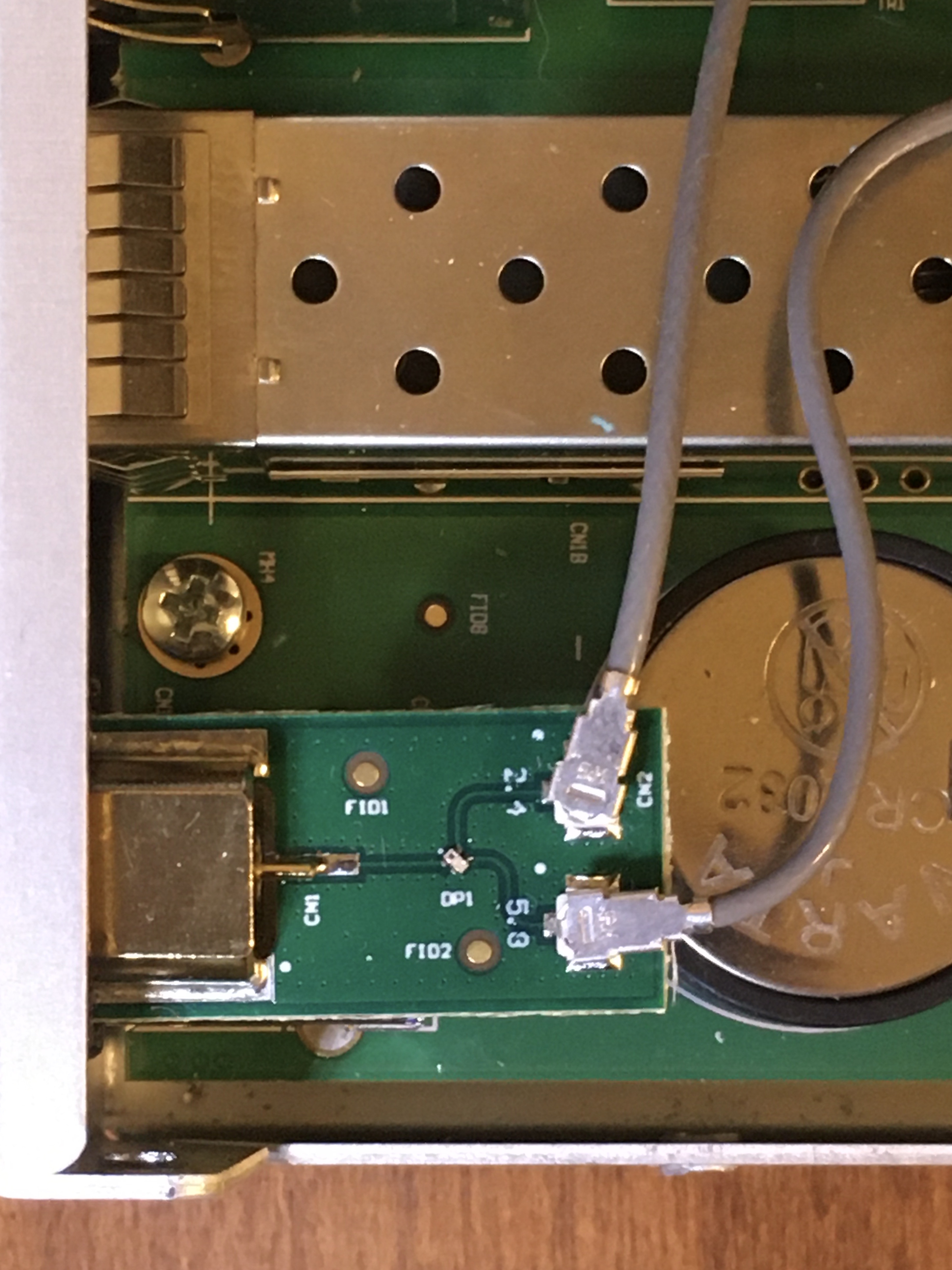I was recently hoping to replace an aging proprietary router (upgraded to a Gargoyle FOSS firmware). After rejecting a popular brand with a disturbing GPL violation habit, I settled on the Turris Omnia router, built on free software. Overall, I was pretty satisfied with the fact that it is free and comes with automatic updates, but I noticed a problem with the WiFi. Specifically, the 5 GHz access point was okay but the 2.4 GHz was awful.
False lead
I initially thought that the 2.4 GHz radio wasn't working, but then I realized that putting my phone next to the router would allow it to connect and exchange data at a slow-but-steady rate. If I moved the phone more than 3-4 meters away though, it would disconnect for lack of signal. To be frank, the wireless performance was much worse than my original router, even though the wired performance was, as expected, amazing:

I looked on the official support forums and found this intriguing thread about interference between USB3 and 2.4 GHz radios. This sounded a lot like what I was experiencing (working radio but terrible signal/interference) and so I decided to see if I could move the radios around inside the unit, as suggested by the poster.
After opening the case however, I noticed that radios were already laid out in the optimal way:

and that USB3 interference wasn't going to be the reason for my troubles.
Real problem
So I took a good look at the wiring and found that while the the larger radio (2.4 / 5 GHz dual-bander) was connected to all three antennas, the smaller radio (2.4 GHz only) was connected to only 2 of the 3 antennas:

To make it possible for antennas 1 and 3 to carry the signal from both radios, a duplexer got inserted between the radios and the antenna:

On one side is the 2.4 antenna port and on the other side is the 5 GHz port.
Looking at the wiring though, it became clear that my 2.4 GHz radio was connected to the 5 GHz ports of the two duplexers and the 5 GHz radio was connected to the 2.4 GHz ports of the duplexers. This makes sense considering that I had okay 5 GHz performance (with one of the three chains connected to the right filter) and abysimal 2.4 GHz performance (with none of the two chains connected to the right filter).
Solution
Swapping the antenna connectors around completely fixed the problem. With the 2.4 GHz radio connected to the 2.4 side of the duplexer and the dual-bander connected to the 5 GHz side, I was able to get the performance I would expect from such a high-quality router.
Interestingly enough, I found the solution to this problem the same weekend as I passed my advanced amateur radio license exam. I guess that was a good way to put the course material into practice!
Thank you so much for sharing your findings about the swapped pigtail cables in your Turris Omnia. I bought a TO just recently and set it up tonight. I noticed that I got signal levels of just -79 dBm in 2.4 GHz even when I was just 1 m away from the device. At the same time & place, I received 5 GHz signal with about -34 dBm.
Without your post and detailed description it would probably have taken me days to find out whats going on...
Yes, it looks like all of the photos were taken after fixing the wiring.
Francois
Thank you for this post. It confirmed me my suspicion and I have found it while making sure how pigtails should be connected.
I was recently upgrading old Omnia to NAS box. Since then I had issues with 2.4 GHz WiFi. Of course, issue was in switched pigtails on one of the antennas. Layout of WiFi cards in slots was the same as on your photo, however, my Omnia has different duplexers. On your photo, 5GHz is connected to the left port, while mine has 5GHz on the right port.
If someone finds this page, make sure you check what duplexers you have in your unit and don't blindly trust photo of other unit, as some components may differ.